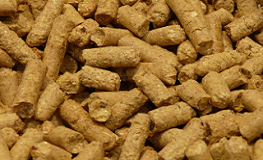By R Roehe, M Martínez-Álvaro, M D Auffret, C-A Duthie, R D Stewart, M Watson, R J Dewhurst
The use of relative rumen microbial gene abundances to estimate meat fatty acids profiles has great potential as proxy traits for breeding.
Read
By Yanfen Cheng, Ying Wang, Yuanfei Li, Yipeng Zhang, Tianyi Liu, Yu Wang, Thomas J. Sharpton, Weiyun Zhu
This study evaluates the degradation pattern of rice straw by ruminal bacteria and identifies the bacteria that colonize rice straw during its digestion in the cow rumen.
Read
By Cesar E. Guzman, Lara T. Bereza-Malcolm, Bert De Groef, Ashley E. Franks
This article provides insight into rumen microbial colonization, which is essential for calves’ future growth and digestive health.
Read
By Jan C. Plaizier, Shucong Li, Anne Mette Danscher, Hooman Derakshani, Pia H. Andersen, Ehsan Khafipour
A study showing how a grain-based diet-induced subacute ruminal acidosis (SARA) challenge impacts the rumen microbiota of lactating dairy cows. The richness, the diversity, as well as the stability of the bacterial communities were reduced for SARA challenged cows. Both ruminal and fecal microbiota were changed, indicating that the rumen but also the hindgut microbiota are affected by SARA challenge.
Read
By P. Pourazad, R. Khiaosa-ard, M. Qumar, S. U. Wetzels, F. Klevenhusen, B. U. Metzler-Zebeli, Q. Zebeli
An interesting study looking at the effect of feeding pattern on subacute ruminal acidosis (SARA) severity and rumen VFA concentrations in dairy cows.
Read
By Sophie Comtet-Marre, Frédérique Chaucheyras-Durand, Ourdia Bouzid, Pascale Mosoni, Ali R. Bayat, Pierre Peyret and Evelyne Forano
French scientists recently developed an innovative functional DNA microarray called FibroChip, which targets 392 genes involved in monitoring ruminal cellulose and hemi-cellulose degradation.
Read
By S. Comtet-Marre, N. Parisot, P. Lepercq, F. Chaucheyras-Durand, P. Mosoni, E. Peyretaillade, A. R. Bayat, K. J. Shingfield, P. Peyret, E.Forano
A metatranscriptomics study of dairy cow rumen microbiota looked at both the expression of genes encoding fiber degrading enzymes (carbohydrate-active enzymes, or CAZymes) and the microbial populations.
Read






